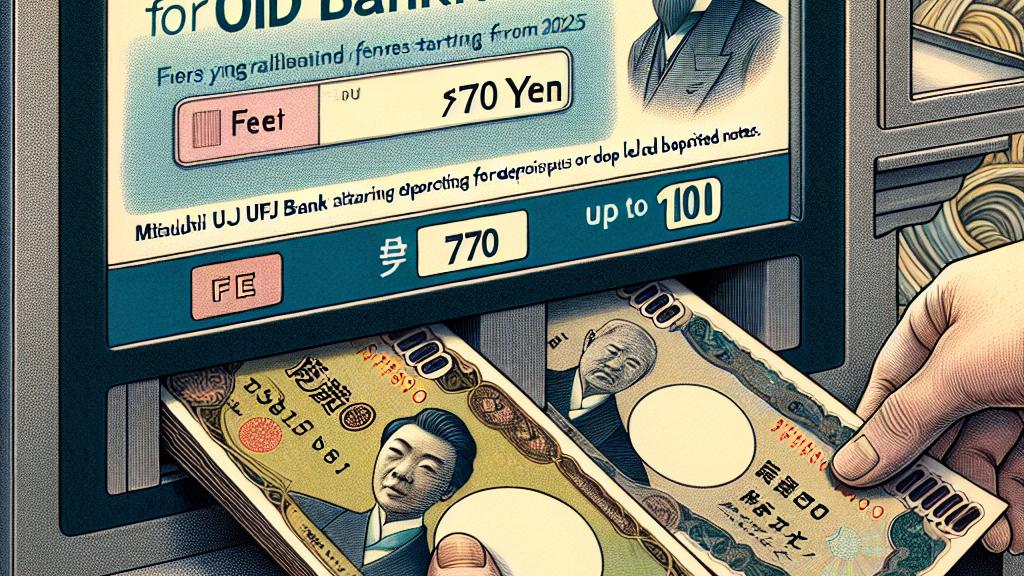Fee Structure for Shōtoku Taishi Notes at Mitsubishi UFJ Bank
Overview
- Mitsubishi UFJ Bank's new fee for depositing Shōtoku Taishi banknotes significantly impacts collectors and customers alike.
- A fee of 770 yen applies to each deposit of up to 100 notes, with extra charges for higher amounts, making it a critical consideration for those with old currency.
- In contrast, modern banknotes issued after 1984 remain without these fees, providing a more economical option for everyday transactions.

The Introduction of Fees: A Notable Change in Banking Practices
In an important policy shift, Mitsubishi UFJ Bank will impose fees for depositing old banknotes, particularly those bearing the iconic likeness of Shōtoku Taishi, starting April 2025. This change marks a departure from the traditional practice where customers could deposit these cherished notes without incurring fees. With the goal of streamlining operations and managing rising costs, the bank has set a fee of 770 yen for up to 100 notes. However, this fee increases for every additional 100 notes deposited. For example, if one were to deposit 300 old notes, the cost would climb to 2,310 yen. This new ruling prompts a refreshing yet serious discussion about the relevance of vintage currencies in a modern banking ecosystem.
Breaking Down the Fee Structure: Essential Insights for Consumers
Consider this scenario: depositing your cherished Shōtoku Taishi notes may not appear costly at first glance, given the initial 770 yen fee for the first 100 notes. Nonetheless, if you possess a considerable collection, those fees can rapidly escalate, leading to potential financial surprises. Moreover, this new framework highlights a stark contrast between old and new banknotes. Unlike the older notes, modern banknotes—which feature figures like Fukuzawa Yukichi and began circulation in 1984—are exempt from these fees, which ensures their usability without any financial burden. Thus, the introduction of fees serves as a catalyst for people to think critically about which forms of currency they choose to use in their daily lives.
Cultural Relevance and the Market Value of Old Currency: A Thoughtful Exploration
Shōtoku Taishi notes are steeped in cultural significance, representing more than just currency; they reflect Japan's rich history. Imagine finding a bundle of these notes in an old family safe; the discovery could evoke nostalgia and a desire to learn more about their historical context and worth. Many collectors prize specific features, such as unique serial numbers or notes in pristine condition—criteria that can lead to considerable financial gains in today’s collector’s market. For instance, a rare serial number or an uncirculated note could fetch thousands of yen, far exceeding its original worth. Therefore, instead of hastily depositing these historical notes and incurring fees, one might consider having them appraised or retained for their potential value among collectors. This new banking policy opens a dialogue not only about managing money but also about preserving a legacy that connects the past to the present.

Loading...